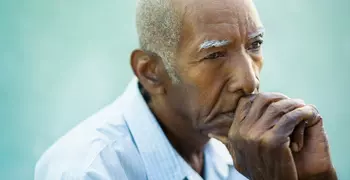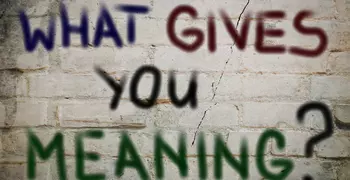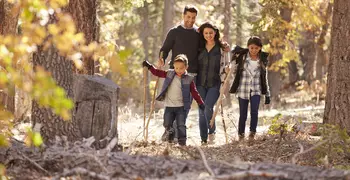COVID-19 and Anxiety
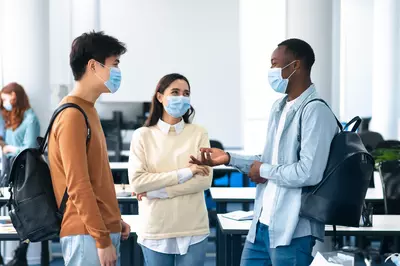
Coping with Change and Loss in COVID-19 Times
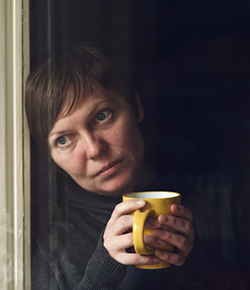 Here in Minnesota, we have had months of “social isolation” and coming to grips with the reality of a pandemic. Our lives have changed, and we are experiencing the loss of so much that we took for granted before. As we talk to others (virtually, of course), we are beginning to realize the impact these losses are having on us individually and as a community. We are grieving and unsure what to do.
Here in Minnesota, we have had months of “social isolation” and coming to grips with the reality of a pandemic. Our lives have changed, and we are experiencing the loss of so much that we took for granted before. As we talk to others (virtually, of course), we are beginning to realize the impact these losses are having on us individually and as a community. We are grieving and unsure what to do.
We have found it helpful to articulate some of these losses in two key areas so we can start to acknowledge them and see what we can do. You may recognize some, and you may have your own.
Loss of social contact
Apart from the people we live with, most of us now have limited face to face contact with other people. But we have Zoom, we have FaceTime—what exactly are we missing when we can’t be physically close to others?
Missing deeper connections
To begin, we are likely grieving deeper connection with friends and loved ones. This is not just because we are missing physical affection and touch—the hugs or holding hands, or even pats on the back, all of which can produce oxytocin—the feel-good and connecting hormone. It is also because we are losing valuable aspects of how we communicate. Our virtual communication's limitations make it difficult for us to be authentic and vulnerable, which is key to true connection.
Limitations of virtual communication
Loss of natural rhythm
Even a good virtual video connection often has abrupt shifts between speakers and unnatural pauses—a loss of the natural dance we do when speaking with others.
We have to work harder to communicate and as a result we lose the ease of exchange that creates intimacy.
Missing body cues
In video calls and online meetings, we miss some of the body language, which is an important part of how we communicate. We generally just see heads and shoulders, so we miss cues like hand gestures, or subtle shifts in position.
And of course, we no longer have physical distance as an important clue—the way someone leans in to tell a confidence for example.
Distorted signals
Video calls can distort some of our body language. When talking, we look into each other’s eyes to signal interest, but on video, we actually have to look at the camera to appear to look into someone’s eyes. When we do this, we can’t actually see the other’s face—another disconnect.
Leaning back on video can seem distancing, whereas in person we might see it as the other person relaxing in our presence.
Missing participation in community
 We are also lacking connection with our larger community and the myriad of daily little exchanges—with coworkers, the server in the coffee shop or diner, the other parents at school, our fellow fans at a sporting event—little interactions we probably might not even notice, but which flavor our day and create a sense of connection. Our days now pass without these enlivening moments.
We are also lacking connection with our larger community and the myriad of daily little exchanges—with coworkers, the server in the coffee shop or diner, the other parents at school, our fellow fans at a sporting event—little interactions we probably might not even notice, but which flavor our day and create a sense of connection. Our days now pass without these enlivening moments.
Think also about going to a concert or play or movie, where we are all in community sharing the beauty and emotion. Or attending a sports event and living the ups and downs of a game with our fellow fans. Not to mention the more obvious fun of playing a game or sport with others. (Yes, there are some virtual opportunities, but it is not the same as high-fiving or slapping someone on the back or hugging in joy.) That is gone too.
Loss of a sense of safety
Our world has changed and with it our assumptions about our health and safety. Those in our communities who have fewer resources, or other challenges, may have already experienced these losses in the past, but now feel an even greater threat. We list some of these here, so you can recognize them and acknowledge the difficulties you are facing and be gentle with yourself. You are not alone in dealing with these losses.
- Our assumption of health has changed. Some of us may have already experienced this with a diagnosis such as cancer, but many of us live with the unexamined expectation of continued health. A virus that spreads easily and can kill even healthy young people attacks this assumption, creating a form of anticipatory grief that there is something bad out there, but we don’t know how it will manifest or when.
- Our sense of a social safety net is eroding. Where we once may have felt sure that if we got sick, there would be resources to care for us, we now worry that there will not be a bed or respirator or even a nurse for us.
- Our financial security is threatened. Many of us have lost our jobs or fear we will. College and high school students worry that they won’t find jobs after they graduate and that they are entering a work world with fewer choices. Older adults near or in retirement worry about the loss of their savings.
- Even our ability to find common spaces where we can relax is limited. Places where we formerly felt safe--where we could put down our guard—are no longer so. As we walk in a park or neighborhood where we used to feel relaxed, we are now on guard for people passing closer than 6 feet. Each person who approaches is a threat.
- Our sense of control is gone. We don’t know what will happen. We can’t plan a vacation, or conduct a job search, or look for a new apartment or house.
Devastating losses
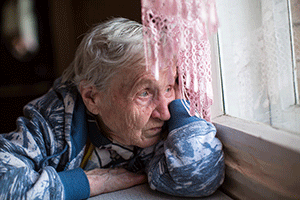 And then there are the devastating losses among us. Daily stories in the news tell the human toll. We can’t help our families and friends far away. We say goodbye to fragile loved ones in assisted living or nursing homes and don’t know if we will see them again. People we love die. We can’t hold memorials to honor and mourn for those we love. Alternatively, we are the ones with cancer or heart disease or other major illness who must now deal with isolation and fear on top of our other stresses and challenges.
And then there are the devastating losses among us. Daily stories in the news tell the human toll. We can’t help our families and friends far away. We say goodbye to fragile loved ones in assisted living or nursing homes and don’t know if we will see them again. People we love die. We can’t hold memorials to honor and mourn for those we love. Alternatively, we are the ones with cancer or heart disease or other major illness who must now deal with isolation and fear on top of our other stresses and challenges.
Coping with loss
It is important to acknowledge that we are experiencing loss—individually and collectively. This grief is personal and pervasive: it sometimes feels all encompassing. So we need strategies to help us. Here are a few suggestions—we hope you find some that resonate with you.
Allow grief
Recognize that we all go through different ways of dealing with grief and at different times and levels.
It is important to acknowledge what we are feeling and allow it.
Tips for dealing with emotions
Fighting an emotion doesn’t help—it takes more energy and only suppresses the emotion so it emerges later. If we let our feelings flow, they pass through.
The classic stages identified by Elisabeth Kubler-Ross are denial, anger, bargaining, sadness, and acceptance. Do you recognize any of these? See if you can label the emotion and notice how it manifests in your body.
But don’t “feed” the emotion with more thoughts, creating a story, or getting caught in rumination. (And if the emotion starts to feel like too much, take care of yourself and take a break. Move your attention to something pleasant or neutral, perhaps your feet on the floor, or the sound of birds outside.)
If you can stay with the emotion, look for any hint of acceptance emerging. It may not be strong or persistent and you may move back into denial or anger, but identify if there is any move towards acceptance.
- How does that feel in your body?
- How does it manifest in thought?
- Do you sense any loosening, any letting go of what you can’t control and opening into what you can do?
Bring compassion to self and others
Give yourself some compassion as you experience these emotions.
Kristin Neff, who has done extensive research on self-compassion, outlines three simple steps to do this.
How to practice self-compassion
1. Begin by acknowledging that this hurts, that you are suffering.
2. Realize that you are not alone, that difficult times are part of what it is to be human.
3. Offer yourself some comfort, as you would to a good friend. This can be words or phrase of support: “I am sorry this is happening to you,” “I am here to help you.” Or it can be a gesture of comfort-holding your own hand or putting your hand on your heart.
Be sure to extend this same compassion to others—we are all in this grief together.
Come into the present
These are times of great uncertainty.
If you find yourself getting caught up in worries about the future, bring your mind back to the body in the present moment.
Use the body to calm the mind
Remember that our worries about anxiety about the future are just thoughts, we don’t know what will actually happen. We can bring our minds back to the present by moving our attention to the body. There are no stories in the body—it is just the felt experience of the present moment. And that can be naturally calming.
To try this, take a comfortable position, close your eyes if you like, and just notice your body resting, tuning in to the natural ease of the body resting, releasing to gravity.
Invite your body to release any tenseness or holding, anything you don’t need right now.
Relax your eyes and jaw, letting your neck and shoulders drop, softening the abdomen and back.
And just notice the felt sensation of the body for a minute or so.
Notice positive moments
HEAL is another practice that helps bring us into the present moment. According to psychologist Rick Hanson, this practice changes our fearful or negative perspective to one that is broader and more positive.
We begin by Having a positive moment and then pausing to savor it—taking 20 or 30 seconds to take in details and Enhance the experience. As we Absorb and appreciate the moment, we see how even in the midst of loss or grief, there is kindness, beauty, joy. We Link this positive moment to the rest for a more balanced view.
Find meaning
We can find a way to connect and contribute in these times. We can reach out to those we love through technology, even with its limits. We can be kind and patient with our families. We can find ways that we can help using our own talents and resources—that might be picking up groceries for a neighbor or giving blood, or simply doing our job as well as we can. We can go outside and connect with nature.
We can consider how we can live going forth, as we are doing right now, with less consumption, so we can contribute to planetary health.
Identify what you can control
This is a time of uncertainty and change, but there are things we can do to keep ourselves and others safe. We can keep our physical distance, wash our hands, call friends, play games online across distance, work as we can at home, help others. We can also avoid getting lost in worst-case scenarios and create realistic contingency plans.
Don't dwell on worst-case scenarios
When we are thinking about potential loss, we often go quickly to a worse-case scenario, our thoughts creating an anxious nightmare.
Psychologist Martin Seligman suggests that you acknowledge the worst scenario your mind has been creating, then identify a best-case scenario and finally the most realistic (which he identified in this pandemic as "I will probably eventually get infected, but like most adults my symptoms will be nonexistent or mild. Even though I am in the age of risk, I am perfectly fit, so I will likely just be uncomfortably ill for a week or so and then recover.").
Seligman suggests that you create a plan for the most realistic scenario with contingencies for what might happen, such as planning to occupy children at home for a few weeks, or what steps you should take if you do get ill. (This is important--do you know what to do if you think you might have the virus? Write down the phone number to call or the place to go if you get very ill.)
Moving forward
Yes, we are grieving, individually and as a community. But we can acknowledge our losses as a first step. Allow our emotions. And then find ways to heal, connecting to the present moment, to each other, to nature, and to purpose.
University of Pennsylvania. A simple exercise to help stay calm in the face of coronavirus uncertainty. March 16, 2020. Retrieved from https://medicalxpress.com/

